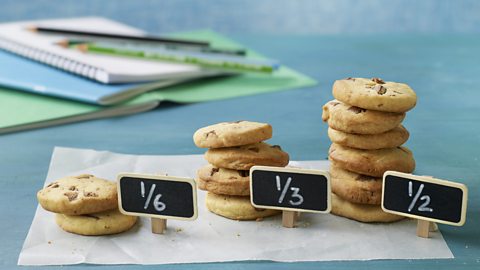Whether it's for a day, a week or a month, keeping your child off school and at home can be an unsettling proposition.
Though the extra time together as a family can sometimes be a blessing in disguise, you might be worried about keeping them up to date with their school work or occupying their attention for the entire day - especially if you're stuck inside!
Here are five ways you can keep your kids - and their brains - busy at home.
╠ř

1) Keep them engaged in real-time learning
If your children are unlikely to spend the day at a desk on their homework, a useful way of engaging them in their learning is by doing real-time interactive activities.
91╚╚▒Č Teach hosts over 30 recordings of interactive 30 to 40-minute programmes called Live Lessons, originally designed for use in the classroom, featuring leading experts and some of the 91╚╚▒ČÔÇÖs biggest brands and talent, including Doctor Who, Blue Planet Live and CBeebies.
With accompanying printable resources covering a range of subjects and Key Stages, you can make sure your kids are learning even during screen time (whilst you grab that much-needed break from them and a cup of tea).
And we wonÔÇÖt tell them itÔÇÖs school work if you donÔÇÖt.
╠ř


2) Keep them active
If youÔÇÖre forced to stay indoors, it can be worrying to think that your children arenÔÇÖt getting the physical activity they need ÔÇô especially since childhood inactivity has been labelled as a ÔÇśglobal epidemicÔÇÖ in itself.
Super Movers is a collaboration between the 91╚╚▒Č and the Premier League to help get kids moving even in limited spaces, and is easy to implement in your own home.
Packed full of fun activities designed to get kids moving, Super Movers is curriculum-linked, so you can be sure that theyÔÇÖre learning as they stay active, even in the confines of your living room.
╠ř


3) Keep them full
We all know kids can get grumpy when theyÔÇÖre hungry, and if youÔÇÖre struggling to get out, trying to get them to do some homework whilst theyÔÇÖre screaming for an ice cream can be a daunting prospect.
Well, fear not, because 91╚╚▒Č Food has a brilliant guide just for you on how to teach your children through cooking ÔÇô including conveying concepts from fractions to adjectives and even practising modern foreign languages.
It even comes complete with simple recipes with everything from chocolate chip cookies to pancakes to ice cream, helping you to satisfy those cravings and get their brains in gear.
╠ř


4) Keep things short and simple
It might be tempting to put on a feature-length documentary on TV so your children can learn for a longer period of time, but this could mean that theyÔÇÖre simply not absorbing the information in the most effective way.
The cognitive load of a learning resource is the balance between task demand (how hard it is and how long it takes) and available resources (childrenÔÇÖs prior knowledge and the resources they have to hand).
Educational consultant and writer David Didau says: ÔÇťSuccessful content has to find a delicate balance ÔÇô never producing a load thatÔÇÖs so high that students become disengaged, but never being so low that learners arenÔÇÖt challenged.ÔÇŁ
91╚╚▒Č Teach has thousands of free, short curriculum-linked clips designed for use in class that can help get across key learning points, helping your children learn more effectively.
╠ř


5) Keep them coming back for more
From a day to a month, when youÔÇÖre keeping children at home for any length of time, it can be difficult to plan activities so they stay occupied for the whole period ÔÇô especially if youÔÇÖre working from home alongside them.
If your children havenÔÇÖt used , nowÔÇÖs the perfect time to get them on it. The site is designed entirely for student use, so they can access the content easily without you having to worry about dusting off your old algebra books.
There are thousands of new free quizzes available to GCSE students who are signed in, which chart their progress and adapt to their learning as they go, and the games designed for primary-aged children are fun, educational, and come with built-in rewards and levels so theyÔÇÖll want to keep coming back for more.
╠ř
